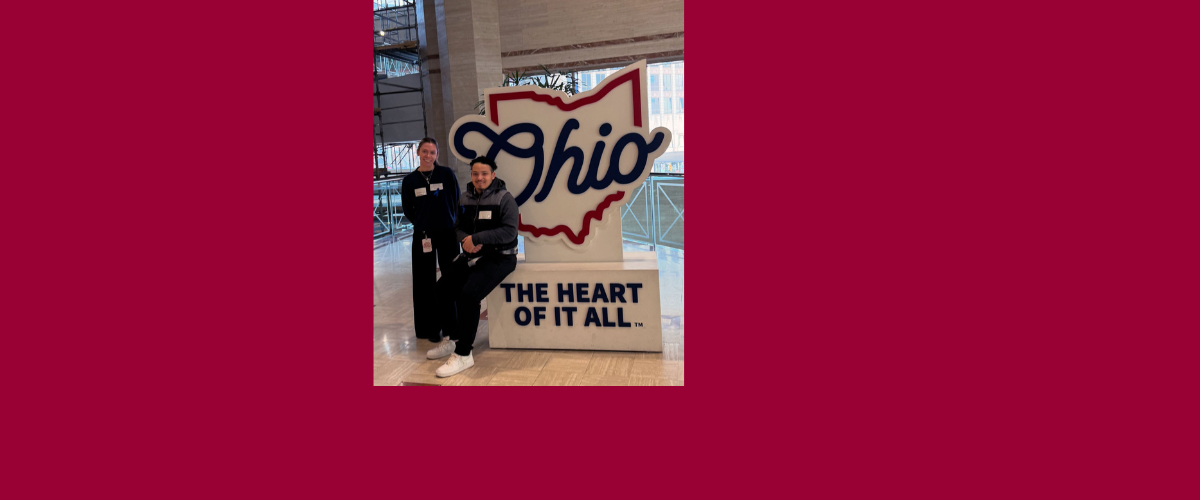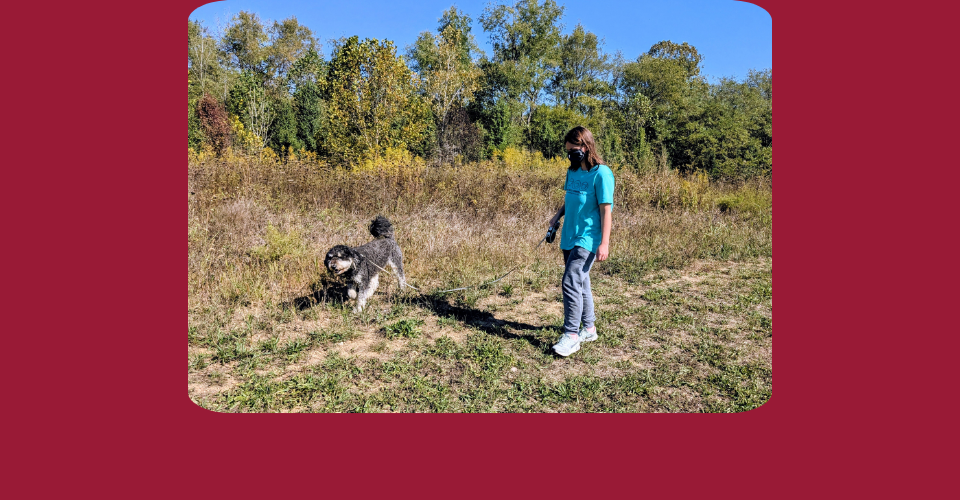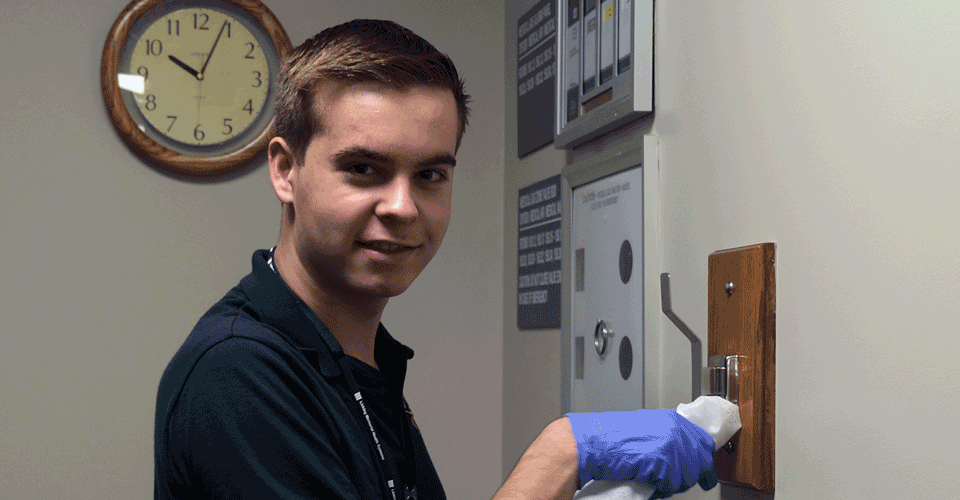- Fax- 740-322-6990
- 740-349-6588
- 800-325-2848
Advocating for brain injury awareness

‘He just kept going’
April 2, 2025
‘It just helps to know we have people in our corner’
April 15, 2025Mylo Johnson often wears a blue ribbon pinned to his shirt to show his support for the Brain Injury Association of Ohio (BIAOH.)
It’s a cause he didn’t know anything about as a high school athlete at Watkins Memorial High School. But in 2021, when he was 18, a serious car accident changed everything.
Mylo — who was given a 2 percent chance of survival — became a brain injury survivor, and his mother Amy Silva and step-father, Noe Silva, became caregivers.
As they adjusted to their new reality, the BIAOH became a lifeline. And as Mylo has gotten stronger and able to use his voice for advocacy, he and his family are trying to give back.
They recently attended Brain Injury Advocacy Day on March 10 at the Ohio Statehouse to acknowledge Brain Injury Awareness Month and help raise awareness about the prevalence of brain injuries.
The BIAOH estimates that 1 in 4 Ohioans have had at least one traumatic brain injury-in their lifetime and it is a leading cause of disability in the United States.
“It’s important to us, just sharing Mylo’s story so people can see the impact,” Amy said.
‘It is truly a miracle’
 When Mylo meets young people, he warns them, “Wear a seatbelt.”
When Mylo meets young people, he warns them, “Wear a seatbelt.”
He wasn’t wearing one on March 18, 2021, when a short trip to the grocery store for snacks ended in a head-on crash.
His brain injury was so severe he spent months in the intensive care unit and doctors told his family they should plan for him to live in a skilled nursing facility for the rest of his life. Amy pushed for him to receive care at Ohio State University’s Dodd Rehabilitation Hospital. It took several years of work and treatments, but Mylo slowly started coming back to his family. He had to relearn to breath, walk, talk and eat and the progress was slow. But they held onto hope that he could keep moving forward, Amy said.
“Seeing the progress gave us a little bit of hope and we pushed forward. It is truly a miracle,” Amy said. “God always had the perfect plan.”
Finding support
In the early days of Mylo’s recovery, Amy knew that their family needed support.
She reached out to the Licking County Board of Developmental Disabilities and began the intake process. Since Mylo’s injury happened at 18, he was found to be eligible.
Their LCBDD service coordinator helped them learn about the Ohio Home Care waiver, a funding source that would help meet Mylo’s serious medical needs at his Pickerington home.
Support from LCBDD gave them a strong foundation, but Amy wanted to find a community of survivors and caregivers.
Several years into Mylo’s recovery, he and Amy attended one of BIAOH’s NeuroSparks camps at Cleveland State University. The more she learned about the agency, the more opportunities she found to meet other families impacted by brain injuries and bridge the gaps in Mylo’s services.
 “We wouldn’t be where we are today without the agency and its resources,” she said.
“We wouldn’t be where we are today without the agency and its resources,” she said. 
‘Hope and encouragement’
Over the past few months, Mylo has made great strides in his independence.
After getting connected with LICCO, a division of the FUSE Network, he started working at the Denison recycling center several days a week. He’s made friends and has formed a bond with his job coach. He gets himself ready in the morning and takes Licking County Transit on his own. He also enjoys working out and going to movies.
These are accomplishments that his family members were told they’d never see, but Mylo said he’s committed to the progress.
He’s hoping to start a new intensive outpatient treatment program so he can continue to improve.
“Don’t ever feel stagnant in the water,” he said. “There is always something else out there, that you could move toward.”
He and Amy also want to continue advocating for the BIAOH — talking about the need for better prevention, treatment, and support services related to brain injuries.
“We want to give others hope and encouragement to use their voice,” she said.
For more information about the Brain Injury Association of Ohio, visit biaoh.org.




